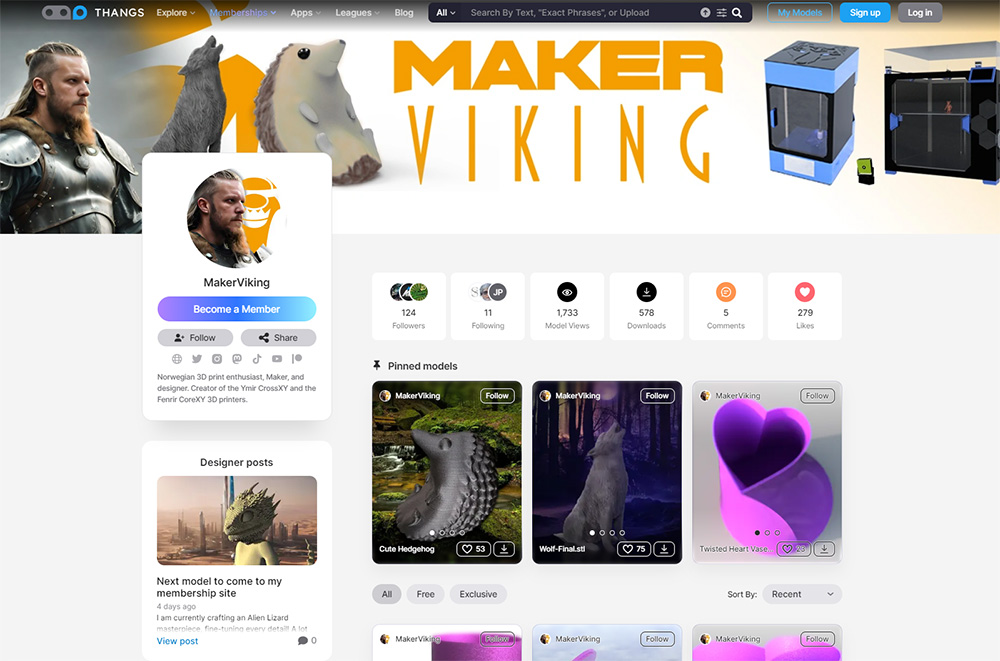Welcome to the MakerViking's lair!

Join me and other community members in creating the Ymir CoreXY 650x650x700+ 3D Printer
How the heck does 3D printing work?
All 3D printers use the same principle; Digital models are turned into physical three-dimensional objects, by laying down material layer by layer until the complete object is done. The process is also called Additive Manufacturing.
Compared to CNC machining which is a subtractive manufacturing, and Injection molding which is formative manufacturing, 3D printing is different on a fundamental level.
The manufacturing of the part is directly on a build platform and is layed down lone layer at a time, which has both it's benefits and limitations. I'll write more about this below.
The process of 3D printing
The way the process starts is with digital blueprint of the object, this is a digital 3D model. Created in software like Fusion 360, Tinkercad and many more. The model is then prepared for printing (Slicing) in a Slicer like Ideamaker, Simplify3D, Cura or Prusa Slicer. The slicer slices the model into thin, 2-dimensional layers and creates everything into a instruction file that the printer understands (Gcode).
What happens next is depending on what type of 3D printer that is going to be used - Desktop FDM printers which is what most people have, melts the plastic filament, pushes it through a nozzle and onto a build platform. There are other technologies like big SLS printers which are used in industrial environments, that uses laser sintering that melts thin layers of metal of plastic powders. There are also SLA and DLP printers which cures resin layer by layer. These have the advantages of having great resolution but usually don't have large build volume.
Types of material
There are many different types of materials available. FDM 3D printers uses plastics like PLA, ABS, TPU, PETG, CPE, Nylon and many more. SLS have both metal and plastic powders and SLA and DLP 3D printers uses resin of various types. The created parts can have many different properties, depending on the material used, clear, opaque, and flexible which feels like rubber and so on.
Print time
A typical print takes up to a day to print, but it all comes down to what speed you are printing with, and complexity and size of the printed object. My personal record so far is over 100 hours.


